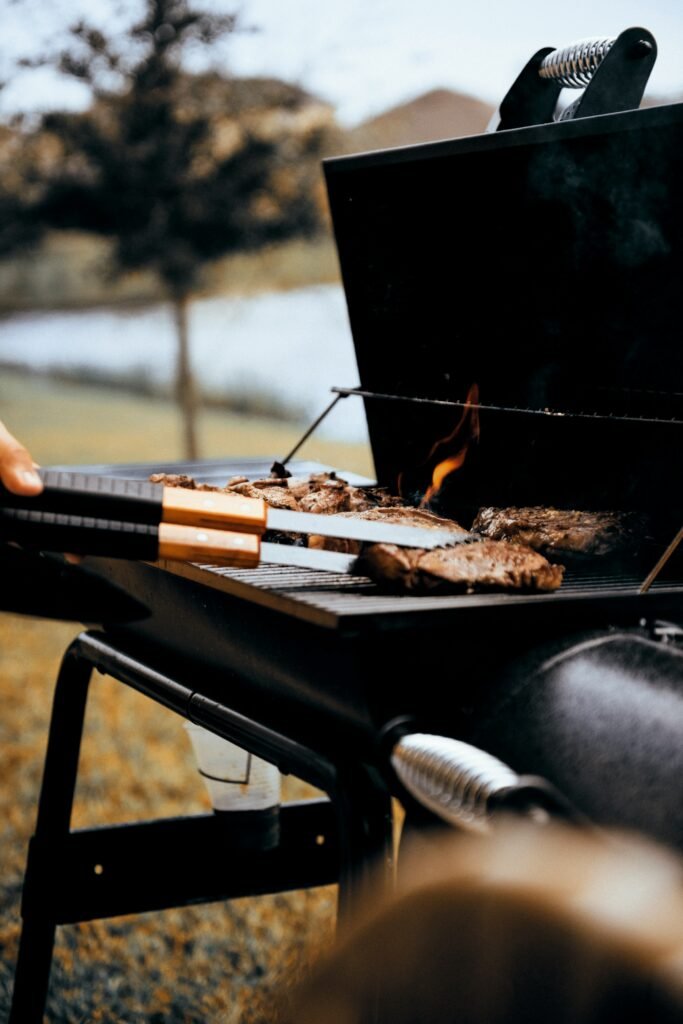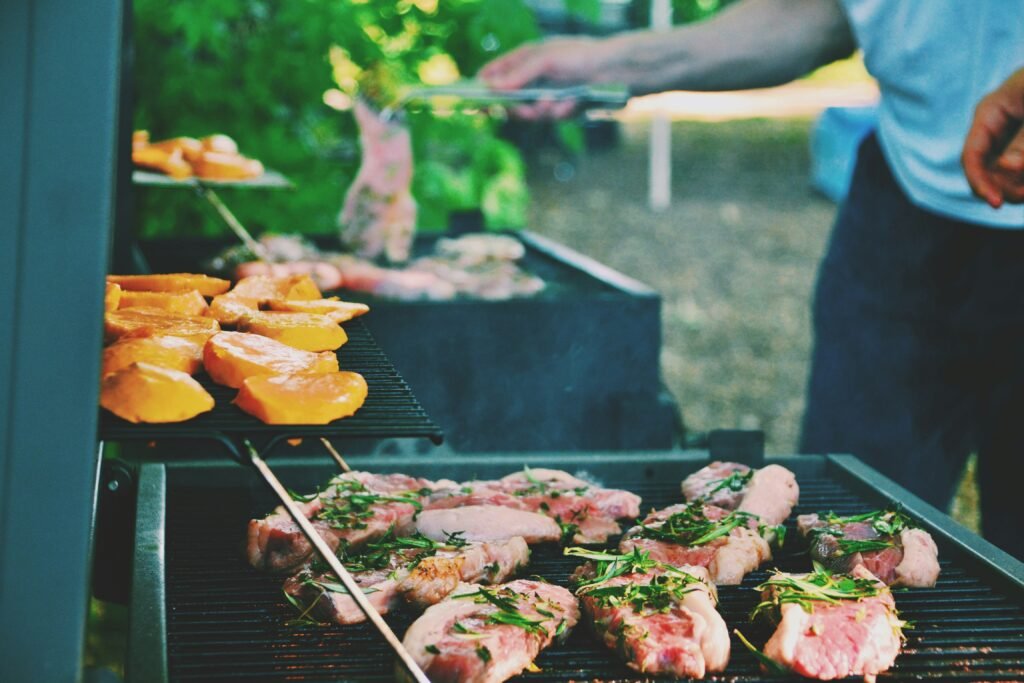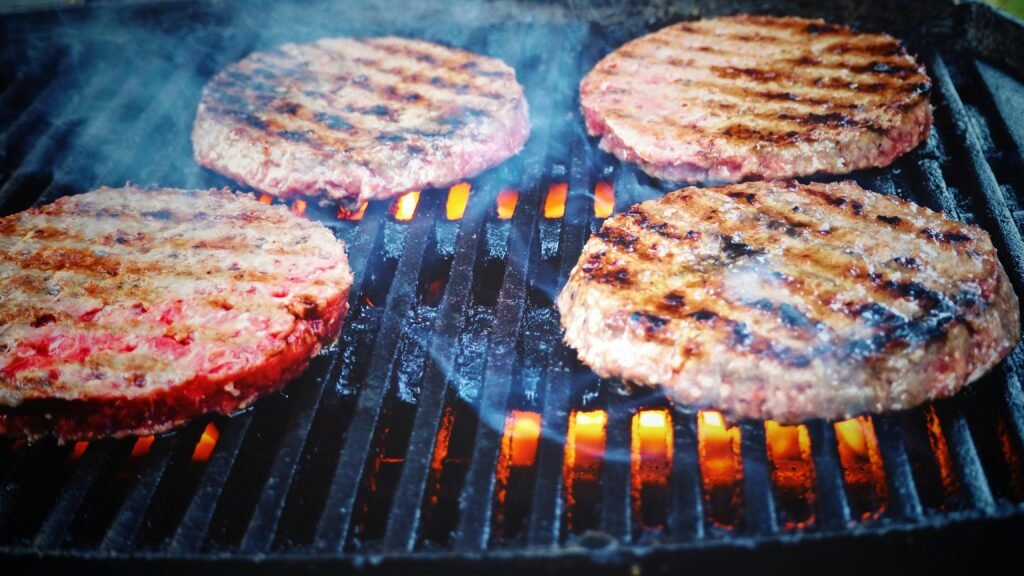What makes a smoked pork recipe not just good, but exceptionally mouth-watering? As we gather around the pit, let’s dive into the art of smoking pork, where flavors merge with memories to create an unforgettable culinary experience. In the world of smoked foods, pork stands as a cornerstone, draped in history yet open to innovation. Our shared quest is to perfect this delicacy in a way that suits our collective tastes and whims.

This image is property of images.unsplash.com.
Why Smoked Pork?
Smoking pork takes us back to traditions that are as deeply ingrained as the smoky flavor itself. There’s a certain nostalgia in that slow-cooked aroma, isn’t there? It’s a technique that not only infuses meat with unforgettable flavors but also transforms our cooking into an art form. As we embark on our journey, we’ll discover why this cooking style remains a beloved pastime for many.
Smoking, in essence, is about creating a symphony of senses—the rich smell of burning wood, the sight of smoke swirling around, and the taste of perfectly seasoned pork. It’s about that patience we muster up on a lazy afternoon and the satisfaction we feel with each tender bite.
Choosing the Right Cut
Before we light the smoke, let’s ponder over what cut of pork to choose. Decisions, decisions! Well, here’s the breakdown:
- Pork Shoulder (or Butt): A fatty, muscular cut that’s perfect for smoking low and slow. It easily lends itself to being pulled or chopped.
- Pork Belly: Think of crispy, smoky bacon, but on a grander scale.
- Pork Loin: Lean and mild in flavor, it’s perfect for those who prefer less fatty cuts.
- Pork Ribs: Whether baby back or spare, ribs smoke beautifully, creating that fall-off-the-bone delight.
Each cut has its charm and can be tailored to suit different palates. Our choice depends largely on what we’re craving at the moment—be it the robust, flavorful richness of a shoulder or the tender elegance of a loin.

This image is property of images.unsplash.com.
Prepping the Pork
Imagine holding the raw piece of meat you’ve selected, full of potential, ready to be transformed. This is where the journey begins. Prepping pork is an ode to patience. From trimming excess fat to creating a balanced rub, care in preparation lays the foundation for that finished taste we’re all after.
Trimming and Tying
To trim or not to trim the fat? It’s the ultimate question. A good rule of thumb is to leave just enough fat to keep the moisture intact as the pork slowly cooks.
For larger cuts, like a pork shoulder, tying it with butcher’s twine can be beneficial. It ensures the meat cooks uniformly and the flavors intrude every nook and cranny.
Crafting the Perfect Rub
A rub is like the overture of a symphony—it sets the stage for what’s to come. We’ve seen countless recipes, each boasting their secret mix of spices. Here’s a classic take:
| Ingredient | Amount |
|---|---|
| Brown sugar | 1/4 cup |
| Paprika | 2 tbsp |
| Black pepper | 1 tbsp |
| Garlic powder | 1 tbsp |
| Onion powder | 1 tbsp |
| Salt | 1 tbsp |
| Cayenne pepper | 1 tsp (adjust for heat) |
To mix things up, we might choose to add cumin for an earthy note or even a hint of cinnamon for warmth. Customizing a rub lets us cater the flavors to our own preferences.
Equipment and Fuel
Building our smoker station is akin to assembling a fine-tuned orchestra. Each component must harmonize for an exceptional performance.
Selecting the Smoker
Our smoker is our most trusted ally. Whether we’re using an electric smoker for convenience, a charcoal smoker for traditionalists, or a pellet smoker for an even heat distribution, the goal remains the same: to achieve that signature smokey taste.
Choosing the Wood
There lies an artistry in selecting the right wood chips or chunks to fuel our smoker. Hickory offers a robust profile, mesquite brings forth a bold smokiness, while fruitwoods like apple or cherry provide a delicate sweetness. The choice of wood blends with our chosen spices to craft a one-of-a-kind flavor profile.

This image is property of images.unsplash.com.
The Smoking Process
And now, the crescendo of our culinary performance—the smoking process. It’s where we’re trained in patience, where the anticipation builds with each hour that passes. Here’s how we embark on this journey.
Setting the Temperature
Consistency is key. Maintaining a steady temperature between 225°F to 250°F in our smoker ensures the pork absorbs the optimum amount of smoke without drying out. A simple grill thermometer can be our constant reminder to stay on track.
The Smoking Timeline
Depending on the cut of pork, we’re in for a bit of a wait. Here’s a rule of thumb for smoking times:
| Cut | Average Time |
|---|---|
| Pork Shoulder | 1.5-2 hours per pound |
| Pork Ribs | 4-5 hours total |
| Pork Belly | 3-4 hours total |
| Pork Loin | 2-3 hours total |
These times are approximations. Trusting our instincts and using a meat thermometer helps ensure tenderness and doneness. We aim for an internal temperature of 195°F for pulled pork, while ribs and belly are perfect around 185°F.
Maintaining Moisture
To keep our pork juicy, occasional basting with apple juice, cider vinegar, or a mop sauce is crucial. The ritual involves opening the smoker strategically to avoid prolonged heat loss, striking a balance between moist meat and tender succulence.
The Final Flourish: Glazing and Resting
Ah, the home stretch—we’re almost there! Once the pork hits that desired temperature, we shift gears towards glazing.
Glazing for Glory
A sweet, sticky glaze can be the signature that elevates our smoked pork to new heights. We might choose a BBQ sauce or concoct a simple honey and vinegar glaze to lightly brush over the meat in the last moments of smoking. It adds a final layer of flavor that tantalizes the taste buds.
Allowing the Pork to Rest
Once our pork exits the smoker, it’s critical to let it rest. This is when the juices redistribute, ensuring each bite is moist and flavorful. A short 30-minute pause allows all our efforts to culminate into something wonderful.
Serving Suggestions
Sharing is caring, and what’s better than sharing our smoked masterpiece with family and friends? Let’s discuss what might accompany our proudly smoked pork.
With a Side of Classic
Traditional sides like coleslaw, cornbread, and baked beans are classics for a reason. They pair seamlessly, beneath our shining star of smoked pork, bringing balance with their different textures and flavors.
A Modern Twist
If we’re feeling adventurous, how about serving our pork over a bed of creamy polenta or alongside a tangy pickled vegetable salad? Experimentation helps us find new, exciting combinations with every cookout.
Conclusion
So, there we have it—our shared journey through the process of smoking pork. As we conclude, it’s clear that smoking pork is more than just a recipe; it’s pretty much a gathering, an event, perhaps even a little bit of a ceremony. It’s an activity we embark on together, through conversation, fellowship, and, most importantly, the love of good food. Now, equipped with our newfound insights and tips, we hope that you feel inspired to fire up the smoker once again, ready to create another culinary masterpiece. Happy smoking!



